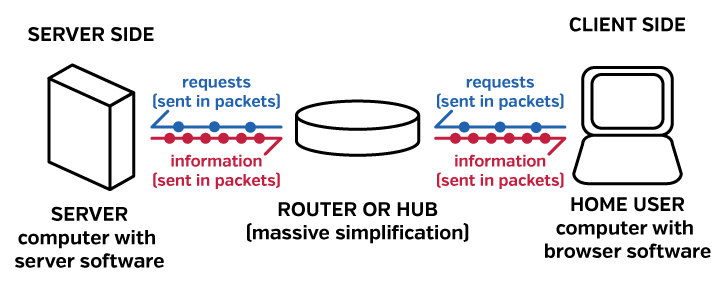What is the internet? How does it work?
What follows is a rather simplified account:
The Internet is a network of linked computers, mostly using the telephone network to communicate from one computer to another. Its one function is to move data from one user to another. The great thing about the internet is that it doesn’t matter what kind of data it handles—video, audio, text, images are all passed along in the same way. The World Wide Web is just one way information can be shared on the Internet.
Each computer on the internet is assigned an IP or Internet Protocol address.Since these are a long series of numbers, hard for us to remember, domains were created. Domains are text handles assigned to each IP. This is why you need to register any domain you purchase with the Domain Name System.
What is a Domain Name?
When your type in a web address, you are typing in the URL or Uniform Resource Locator. It is basically your address on the internet, and it is what any user will need to find your site. We will study the structure of the internet throughout this course.
A full URL from this site
- http: the protocol, or type of server your web browser is talking to
- www: The URL host name, in this case the world wide web
- adgaintroweb: the specific domain name, and the part you register. If you did not have a domain name, you would have to remember the specifc IP address (Internet Protocol address) for your site location on a server somewhere.
An IP address is a series of numbers, such as 192.168.9.100. Hard to remember for us non-robotic types. - com: top level domain: this is another way to distinguish sites. You have noticed other sites ending in .net, .gov… the top domain indicates something of what the site’s general purpose.
Here is a list of the most common top domains:
.com – commercial websites or generic
.edu – post secondary educational institutions
.net – network oriented sites or generic
.org – noncommercial community
.mil – United States military
.gov – United States government





